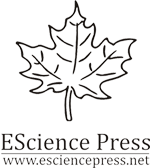Comparative Analysis of Bronchospasm in Patients with Normal and Difficult Airway during General Anesthesia
DOI:
https://doi.org/10.53576/bashir.003.02.0148Keywords:
Bronchospasm, Wheezing, General Anesthesia, Auscultation, DesaturationAbstract
Background: Background: Bronchospasm, a significant tightening of the muscles around the airways, poses diagnostic challenges as its main symptom, wheezing, has various causes. Notably, severe bronchospasm may present without wheezing due to minimal air movement, necessitating comprehensive diagnostic approaches beyond simple auscultation. Objectives: The study aimed to determine the frequency of bronchospasm among patients with normal and difficult airways under general anesthesia and to assess the effectiveness of treatment strategies. Materials and Methods: This retrospective observational study reviewed data from December 2021 to August 2022, involving 100 patients undergoing surgeries under general anesthesia at Shifa International Hospital Islamabad, New Age Medical Center, and Liaquat Memorial Hospital Kohat. Patients were divided based on airway status into normal and difficult airway groups to compare the incidence of bronchospasm and treatment outcomes. Results: The study found a higher prevalence of bronchospasm in patients with difficult airways, where 44.10% (19 out of 43) experienced bronchospasm, unlike the normal airway group, which had no cases. Treatment predominantly involved administering 100% oxygen, deepening anesthesia, and using salbutamol inhalers. Conclusion: The correlation between difficult airways and an increased rate of bronchospasm under general anesthesia is clear, emphasizing the need for vigilant monitoring and specialized care. These findings suggest the importance of preparedness in anesthesia practice to manage bronchospasm effectively, ensuring patient safety and optimal care outcomes.





